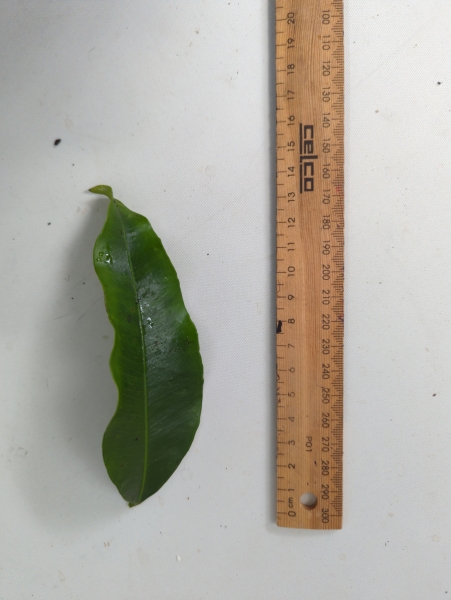
(1/5) This Grafted Achacha if you look closely already has a fruit forming within a few years. Much Quicker than the 10 Years for seedlings. Also it has dwarfing chacachteristics meaning it will stay a lot smaller and more compact than a seedling plant.
![Achacha Fruit ripening on the tree at Daleys Fruit Tree Nursery Kyogle NSW Australia]()
(2/5) Achacha Fruit ripening on the tree at Daleys Fruit Tree Nursery Kyogle NSW Australia
![YouTube: All about Achacha Fruit Trees with successful fruiting]()
(3/5) YouTube: All about Achacha Fruit Trees with successful fruiting
![Achacha - Grafted For Sale]()
(4/5) Achacha - Grafted For Sale
![Leaf of the Achacha - Grafted]()
(5/5) Leaf of the Achacha - Grafted
fullscreen1
Achacha - Grafted
Garcinia humilis
Our local selection of the Achacha, grafted for earlier fruiting. Fruiting in our Biodome here in the Nursery. The fruit are tangy and refreshing with a delicate subtle sweetness, a fine balance between sweetness and acidity, producing an unusual taste s... Read Moreensation. Very moreish. Fruit should be picked mature, as it does not ripen further on storage. Originating from the Bolivian part of the Amazon basin in South America, the Bolivian name of the fruit is Achachairu and translated means honey kiss. Achacha is protected by Plant Breeders Right (PBR) and cannot be grown or propagated without licence agreement with Achacha Fruit Group
$129.00
Pre Order Options
Preferred Climate Tropical, Subtropical
Grown From Grafted
Max Height (when in the ground with good conditions) 5-10m
Plants required to Pollinate 1 (Self Pollinating)
Can it Handle Frosts? Likes Temps above 5deg
Amount of leaves in Winter? All Leaves (Evergreen)
Water Requirements Moderate Watering
Is it a Dwarf Fruit Tree? No (Full Size)
Time to Fruit/Flower/Harvest 5+ Years
Sun or Shade Full (Sun:80%-100%)
Preferred Soil Type Good Drainage
Soil pH Neutral (6.6-7.3pH)
Fruiting/Harvest Months January, February, March, December
Create a Filter to find similar plants






























